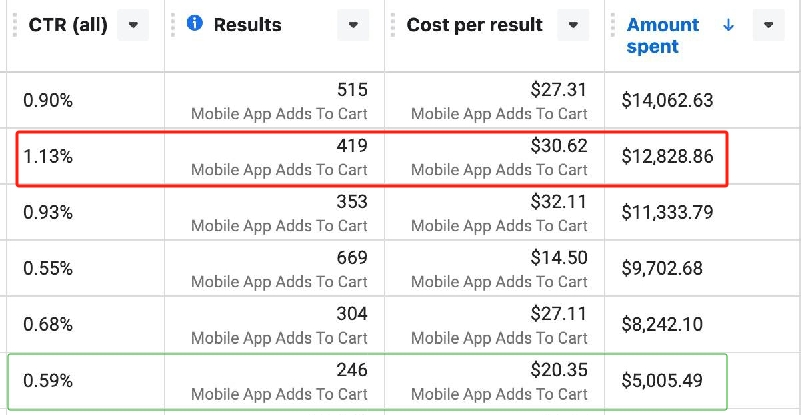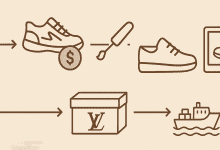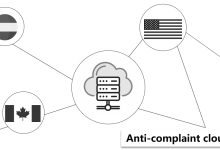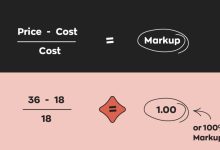CTR (Click-Through Rate) measures how many people click on your ad after seeing it. For example, if your ad is shown to 100 people and 5 of them click, the CTR is 5%. In replica brand advertising, a CTR below 5% usually indicates that your ad creative or copy has room for optimization.
When diagnosing ads, Marcus Steele typically looks at the CTR first. Why focus on this metric first? CTR provides a quick qualitative assessment of the front-end ad performance. Only if the ad creative and copy are effective does it make sense to analyze metrics like CPM, CPC, or add-to-cart rates in more detail.
In theory, a higher CTR usually leads to higher CVR (conversion rate) and better ROI. However, in practice, CTR is not always the most important KPI. For both standalone stores and other industries, most performance indicators are ultimately driven by ROI or ROAS, because these directly determine your return on ad spend.
When your ad sample size is large enough, ROI remains the key metric to evaluate ad effectiveness. CTR can still be used, but it should be treated as a secondary KPI rather than the main performance indicator.
Here, we refer to a Facebook Mobile App Install campaign report from another account.

The account spent over $80,000, providing a very large sample size. In this analysis, we chose Mobile App Adds To Cart and used Cost per Result as the core KPI.

Using a comparative analysis:
-
The red ad had the highest CTR, costing $12,828.86 and generating 419 results.
-
The green ad had a much lower CTR, but its Cost per Result was only $20.35, significantly lower than the red ad, and the total spend was also much less.
In other words, with the same budget, the green ad could achieve at least 630 results, demonstrating a much higher ROI than the red ad.
This shows that CTR alone cannot fully measure ad performance. Ultimately, any ad’s success depends on how well the algorithm delivers the creative to the audience that most needs it, rather than how many people simply click.
In theory, if your CTR (Click-Through Rate) metric is not entirely reliable, it can be partially ignored in day-to-day ad operations.
More often, CTR is used as a diagnostic tool to identify anomalies. After launching your ad, an unusually high or low CTR usually indicates one of two situations:
1) Extremely Low CTR
This requires checking your ad creatives and copy:
-
Did you upload the wrong image or video? Poor creatives can result in almost no clicks.
-
Is your audience targeting off? For example, if you are running an ad for a replica LV bag but targeting mostly men, clicks will naturally be very low. Sure, some men may buy for their partner, but the probability is negligible.

In cases like this, quick detection and optimization are crucial. Otherwise, low-level mistakes can cause significant losses, which can even put the ad operator’s job at risk.
2) Extremely High CTR
When CTR is unusually high but results are low, check if your ad copy is clickbait-heavy. Over-the-top titles rarely translate into meaningful conversions, wasting your budget.
Due to the nature of the replica industry, ads cannot continuously collect massive sample data like standard products. Therefore, CTR only reflects short-term performance and provides limited reference value.
In practice, we use CTR over a short period (usually within a week) to:
-
Diagnose errors
-
Optimize creatives and copy
Once your replica ad campaigns stabilize and core KPIs like CPM and CPC meet expectations, CTR becomes a secondary reference metric. At that point, your focus should be on maximizing budget and keeping ads running steadily.
🚀 Boost Your Replica Ad ROI
Want to maximize the performance of your replica brand ads on Meta and Instagram? Start by optimizing your ad creatives, copy, and targeting, and leverage your short-term CTR insights to improve long-term ROI.
👉 Take action today: refine your replica ads and scale your campaigns smarter with a powerful replica products e-commerce website!
 Custom E-commerce Solutions for High-Quality Designer-Inspired Fashion Replicas | Website Development, Dropshipping, Payment Integration for PayPal and Stripe, Ad Cloaking Services
Custom E-commerce Solutions for High-Quality Designer-Inspired Fashion Replicas | Website Development, Dropshipping, Payment Integration for PayPal and Stripe, Ad Cloaking Services




























![5 Best WordPress Themes for Replica Product International Trade Websites [Recommended]-Custom E-commerce Solutions for High-Quality Designer-Inspired Fashion Replicas | Website Development, Dropshipping, Payment Integration for PayPal and Stripe, Ad Cloaking Services](https://replicasmaster.com/wp-content/uploads/2025/06/1-1-220x150.jpg)
